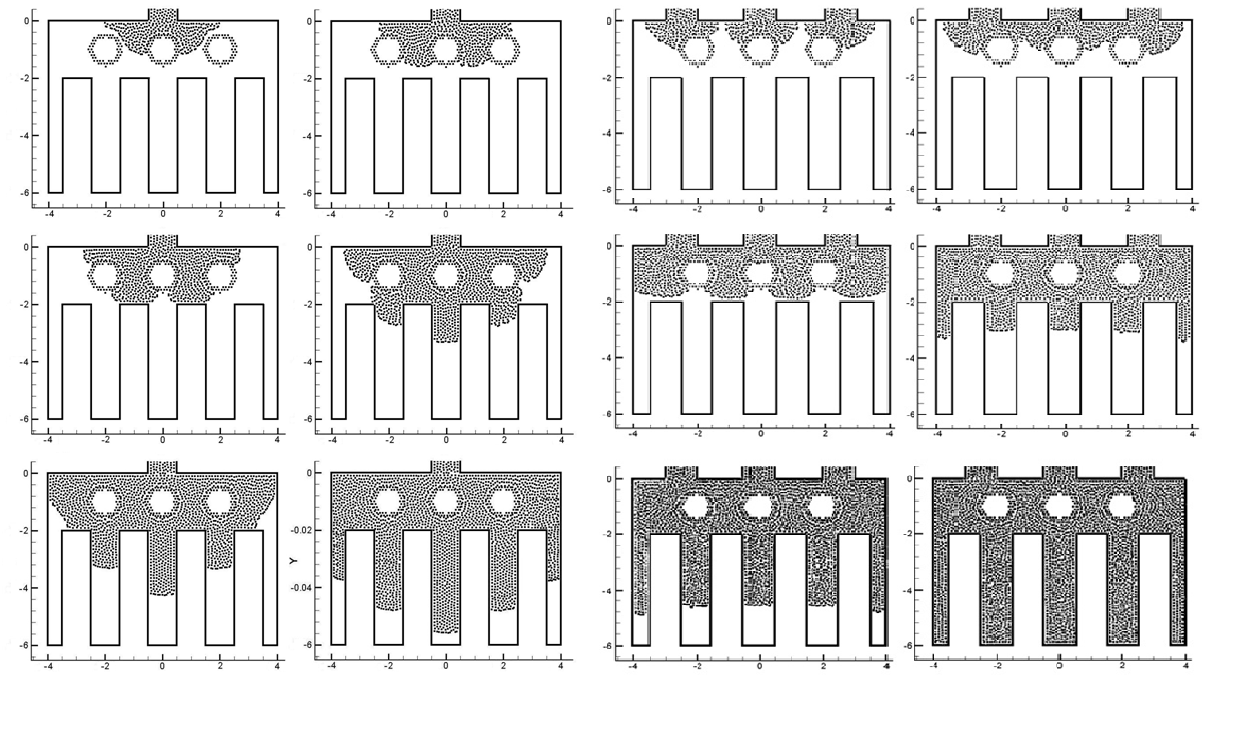Liquid composite molding (LCM) is an important manufacturing process for a variety of composite components. The motion of the fluid in the porous medium during a mold-filling process is critical to the quality and productivity of the components. In this study a smoothed particle hydrodynamics (SPH) model for mold-filling is developed based on the Brinkman-Forchheimer-Darcy equation to study the effects of operational conditions on the mold-filling process. The capillary pressure which is important for metal-based composite is included in the model using the continuum surface force (CSF) method. Two dimensional simulations are performed to show the effects of infusion rate, multiple infusion gates and capillary pressure on the filling time, the evolution of the flow front, inlet pressure and the distribution of the fluid. The results show that the SPH model is an easy implement which has the capability and sufficient accuracy for simulating this process, and it provides a potent tool for design and optimization of liquid molding process for components of complex geometries.  Simulated Molding filling process with one and multiple gates in a comb-shaped mold using SPH method.
Simulated Molding filling process with one and multiple gates in a comb-shaped mold using SPH method.
 Three dimensional simulation of mold filling using SPH method
Three dimensional simulation of mold filling using SPH method